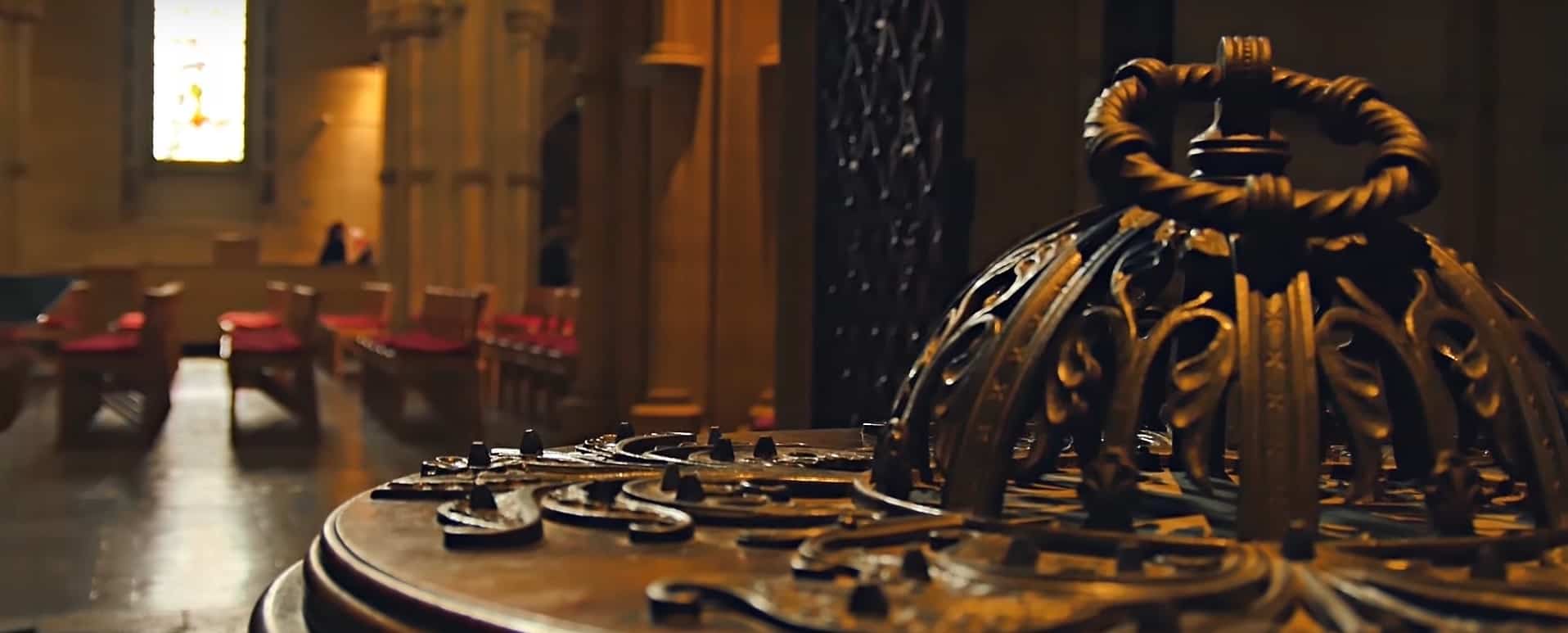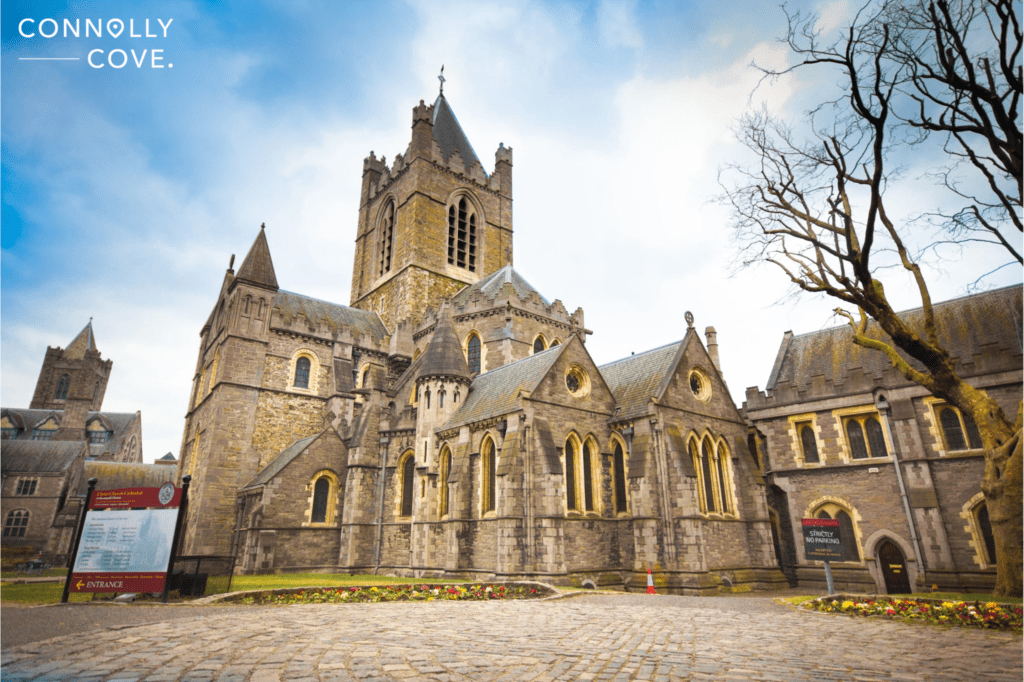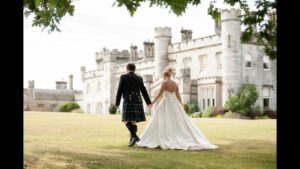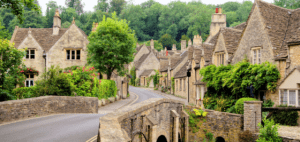The Beautiful Christ Church Cathedral, Dublin, Ireland

Updated On: April 21, 2024 by Ciaran Connolly
Dublin has always been rich with places you will need to visit. Among all the suggestions and choices we always try to bring, we decided to head to the Christ Church Cathedral and get you the wonder of this place. People have been coming to Christ Church Cathedral in Dublin for nearly one thousand years to worship God. It’s also a historical place and building that has undergone several changes and renovations.
The beautiful church is located in the heart of Dublin, Ireland; amid the bustling streets and vibrant culture stands a shining symbol of spirituality, heritage, and architectural mastery – Christ Church Cathedral. More than just a place of worship, this magnificent edifice, also known as the Cathedral of the Holy Trinity, is a living testament to the enduring legacy of Dublin’s past and the unwavering faith of its people.
Christ Church Cathedral is not merely a stone-and-mortar structure but a sacred space where centuries of prayers, rituals, and traditions have woven a tapestry of spiritual significance. From its humble beginnings in the early 11th century to its status as one of Dublin’s most iconic landmarks, the cathedral has stood as a beacon of hope and enlightenment for generations of Dubliners and visitors alike.
As we embark on a journey to explore the captivating beauty and fascinating history of Christ Church Cathedral, we are invited to delve into the depths of its storied past, marvel at its architectural splendour, and immerse ourselves in the rich tapestry of art, and music, and worship that defines this sacred sanctuary.
Join us as we uncover the secrets and treasures of Christ Church Cathedral, a timeless marvel that continues to inspire awe and wonder in all who behold its majestic beauty.
A Thousand Year Old History
Dúnán, the first bishop of Dublin and Sitriuc, the Norse King of Dublin, founded the original Viking church, probably subject to the Archbishop of Canterbury. By 1152, it was incorporated into the Irish church, and the famous Archbishop Laurence O’Toole had been appointed within a decade. He acted directly in diplomatic efforts between the Dubliners and the Anglo-Normans, including Strongbow (Richard de Clare), following the city’s capture in 1170. It was mainly due to John Cumin, the first Anglo-Norman archbishop, that the Hiberno-Norse cathedral was replaced with the Romanesque and later Gothic cathedral, parts of which survive today.
In 1395, King Richard II sat in state in the cathedral to receive homage from the kings of the four Irish provinces: O’Neill of Ulster, McMurrough of Leinster, O’Brien of Munster and O’Connor of Connacht. In 1487, Lambert Simnel, pretender to the English throne in the reign of Henry VII, was ‘crowned’ in Christ Church as Edward VI.
In the sixteenth century, reform again came from England when Henry VIII broke from Rome. He dissolved the Augustinian monastery of the Holy Trinity and established a reformed foundation of secular canons. In 1562, the cathedral was in ruins, and emergency rebuilding occurred immediately. This temporary solution lasted until the 1870s.
In 1689, King James attended Mass at Christ Cathedral Church. One year later, returning from the Battle of the Boyne on 6 July 1690, King William III gave thanks for his victory over King James II and presented a set of gold communion plates to the cathedral. During the 16th and 17th centuries, Christ Church’s crypt was used as a market, a meeting place for business, and, at one stage, even a pub.
The cathedral as it exists today has been heavily influenced by Victorian architecture due to the extensive restorations and renovations carried out by the architect George Edmund Street (between 1871 and 1878).
Nowadays, Christ Church Cathedral houses the critical Treasures of Christ Church exhibition, featuring a video of the cathedral’s history. The exhibition features manuscripts and artefacts that take the visitor through one thousand years of the cathedral’s history, including the stunning royal plate given by King William III in 1697 as a thanksgiving for his victory at the battle of the Boyne.
Renovations and Rebuilding of Christ Church Cathedral
The cathedral was extensively renovated and rebuilt from 1871 to 1878 by George Edmund Street. The 14th-century choir was completely renovated, and the tower and the south nave arcade were rebuilt.
Following the extensive renovation over the centuries, it is difficult to tell which interior parts are medieval or Victorian.
The cathedral contains the reputed tomb of Strongbow, a medieval Norman warlord who came to Ireland at the request of King Diarmuid MacMorrough and whose arrival marked the beginning of Anglo-Norman involvement in Ireland. According to the Christ Church Cathedral website, in 1562, the nave roof vaulting collapsed, and Strongbow’s tomb was smashed; the current tomb is a contemporary replacement from Drogheda. Alongside the main tomb is a more petite figure with sloping shoulders, suggesting a female figure, but wearing chain mail, which may indicate that it was a child.
Many monuments and historical features exist, including Ireland’s oldest known secular carvings. These two carved statues were transported from the Tholsel (Dublin’s medieval city hall), a tabernacle and set of candlesticks which were used when the cathedral last operated (for a very short time) under the “Roman rite”, when the Roman Catholic king, James II, having fled England in 1690, came to Ireland to fight for his throne and attended High Mass in the temporary restoration of Christ Church as a Roman Catholic cathedral.
If you head to the west end of the cathedral, you can find a stone bridge that leads to the former synod hall, which was built on the site of St Michael’s. The hall is now home to the “Dublinia” exhibition about medieval Dublin.
Cultural Heritage and Treasures

Beyond its architectural grandeur, Christ Church Cathedral is also a custodian of Ireland’s cultural heritage, housing a treasure trove of historical artefacts and priceless relics. Among its most revered treasures is the 12th-century crypt, the largest in Ireland. Here, visitors can explore the ancient burial vaults and marvel at the intricately carved sarcophagi of medieval bishops and nobles.
Another highlight of a visit to Christ Church Cathedral is seeing the renowned “cat and rat” mummies. These unusual mummified remains, discovered in the cathedral’s crypt in the 19th century, are believed to be the bodies of a cat and rat trapped in the organ pipes and mummified over time. While their origins remain shrouded in mystery, these curious artefacts serve as a reminder of the cathedral’s long and storied history.
In addition to its ancient relics, Christ Church Cathedral is home to a vibrant musical tradition, with regular concerts and recitals in its hallowed halls. From classical masterpieces to traditional Irish folk music, the cathedral’s musical offerings reflect the rich diversity of Ireland’s cultural heritage.
Events and Activities
Christ Church Cathedral hosts diverse events, concerts, and cultural activities throughout the year, celebrating its heritage and significance. From choral performances and organ recitals to historical reenactments and guided tours, there is always something captivating within its hallowed halls.
One of the highlights of the cathedral’s calendar is its annual Christmas carol service, which draws crowds of locals and visitors alike to revel in the joyous sounds of the season. Additionally, the cathedral frequently hosts exhibitions and lectures that explore various aspects of its history, architecture, and cultural significance, offering visitors a deeper understanding of this iconic landmark.
Continuing Legacy
As Christ Church Cathedral enters its second millennium, its legacy becomes a beacon of faith, culture, and community. Whether attending a Sunday service, exploring its architectural wonders, or simply pausing for a moment of reflection in its sacred precincts, visitors are invited to connect with something greater than themselves and to be part of a living history that spans centuries.
In an ever-changing world, Christ Church Cathedral stands as a reminder of the enduring power of faith, the beauty of human creativity, and the importance of preserving our shared heritage for future generations. Dublin’s spiritual and cultural heart continues to inspire, uplift, and unite all who pass through its gates, inviting them to discover the timeless treasures that lie within.
When to Visit
The Cathedral is open to visitors
| Monday | 9:30 AM–6 PM |
| Tuesday | 9:30 AM–5:30 PM |
| Wednesday | 9:30 AM–6 PM |
| Thursday | 9:30 AM–5:30 PM |
| Friday | 9:30 AM–6 PM |
| Saturday | 9:30 AM–6 PM |
| Sunday | 12:30–3 PM, 4:30–6 PM |
Adult ticket prices are €11.50; seniors only pay €10.00; and Children (Under 12) €4.00.
Conclusion
In a city steeped in history and culture, Christ Church Cathedral is a timeless testament to Ireland’s enduring spirit and faith. Its magnificent architecture, rich history, and cultural significance make it a must-visit destination for anyone exploring the vibrant streets of Dublin.
Whether you’re admiring its awe-inspiring beauty, delving into its storied past, or simply seeking a moment of quiet reflection, Christ Church Cathedral offers a truly unforgettable experience that will leave a lasting impression on all who visit. As one of Ireland’s most cherished landmarks, it inspires awe and wonder in all who pass through its doors, reminding us of the enduring power of faith, art, and heritage.






